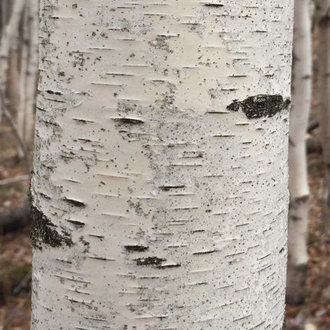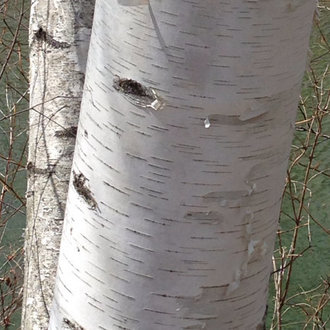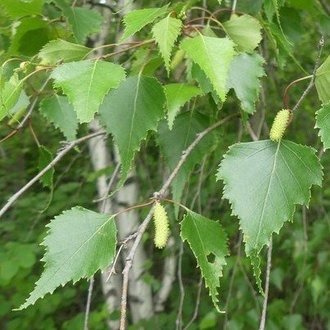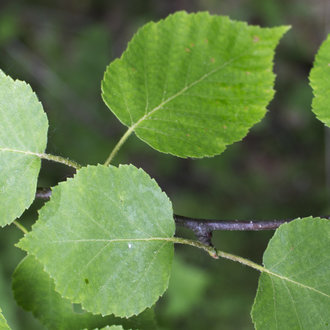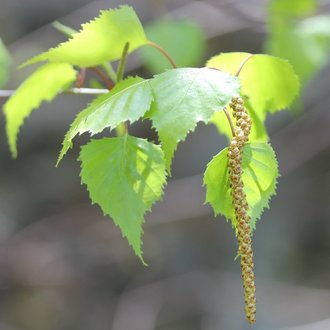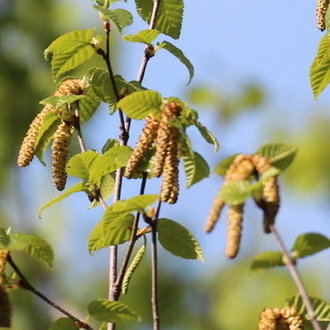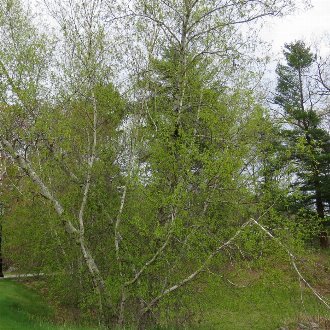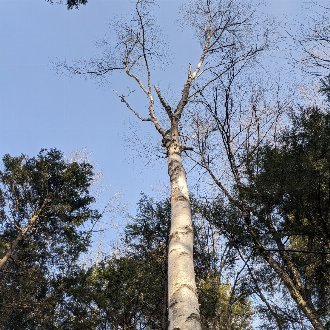Gray Birch vs Paper Birch
Gray and paper birch are easily confused where their ranges overlap in the northeast. Both have white bark and they can grow together in early-successional habitats. However, they can be easily distinguished by leaf shape or bark, and they also have differences in typical growth habit and maximum size. Gray birch ranges farther south, whereas paper birch ranges farther north and west. Paper birch can grow much taller and usually grows straighter.
Gray Birch (Betula populifolia) | Paper Birch (Betula papyrifera) |
A fast-growing, short-lived tree native to northeastern North America; mostly a pioneer species. | A native pioneer species found in a wide range of conditions in cold, northerly parts of North America. |
Bark does not peel; outside of bark often looks "dirty" due to numerous black flecks and wider horizontal dark strips. Photo © Patrick Leary, CC BY 4.0. | Bark peels into thin, papery sheets. Outside of bark looks "cleaner" due to narrower horizontal dark strips and having fewer dark flecks. Photo © Charlie Hohn, CC BY 4.0. |
Triangular leaves. Doubly-serrate pattern on leaf margins often more pronounced. Long point at tip. Photo © Christian Grenier, Public Domain. | More oval-shaped leaves, not as flat at the base, and wider in the middle. Shorter point at tip. Photo © aarongunnar, CC BY 4.0. |
Male catkins usually borne singly or occasionally in pairs. Photo © Even Dankowicz, CC BY 4.0. | Male catkins usually borne in units of 2-4. Photo © Rob Foster, CC BY 4.0. |
Smaller, grows to maximum of 30 feet, usually 20 feet or less. Frequently grows with multiple trunks and rarely has single-trunk habit. Trunks more likely to lean or grow diagonally. Photo © Nick Block, CC BY 4.0. | Mature trees average much taller, to 80 feet, frequently to 65 feet. Typically reaches the forest canopy. Can grow with multiple trunks but also commonly grows with single-trunk habit. Trunks straighter. Photo © Nick Kleinschmidt, CC BY 4.0. |
References & External Resources
These short lists show only links helpful for ID. For a complete list of references and resources also covering other aspects of ecology, visit the links section of the full article on each plant, which is the first entry here.



